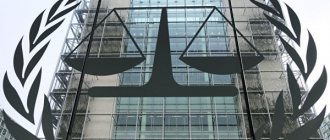ST 127.1 of the Criminal Code of the Russian Federation.
1. The purchase and sale of a person, other transactions in relation to a person, as well as recruitment, transportation, transfer, concealment or receipt committed for the purpose of his exploitation - are punishable by forced labor for a term of up to five years or imprisonment for a term of up to six years.
2. The same acts committed: a) against two or more persons; b) in relation to a minor; c) by a person using his official position; d) with the movement of the victim across the State Border of the Russian Federation or with his illegal detention abroad; e) using forged documents, as well as with the seizure, concealment or destruction of documents identifying the victim; f) with the use of violence or the threat of its use; g) for the purpose of removing organs or tissues from the victim; h) in relation to a person who is known to the perpetrator to be in a helpless state or in financial or other dependence on the perpetrator; i) in relation to a woman who is known to the perpetrator to be pregnant - shall be punished by imprisonment for a term of three to ten years with deprivation of the right to hold certain positions or engage in certain activities for a term of up to fifteen years, or without it and with restriction of freedom for a term of up to two years or without it.
3. Acts provided for in parts one or two of this article: a) resulting in death through negligence, causing serious harm to the health of the victim or other grave consequences; b) committed in a way dangerous to the life and health of many people; c) committed by an organized group - is punishable by imprisonment for a term of eight to fifteen years, with or without restriction of freedom for a term of up to two years.
Notes.
1. A person who for the first time committed the acts provided for in part one or paragraph “a” of part two of this article, who voluntarily released the victim and contributed to the disclosure of the crime committed, shall be exempt from criminal liability unless his actions contain another crime.
2. In this article, human exploitation means the use of prostitution by other persons and other forms of sexual exploitation, slave labor (services), and servitude.
Commentary to Art. 127.1 Criminal Code
1. From the objective side, human trafficking is characterized by the commission of any of the dispositions provided for in Part 1 of Art. 127.1 of the Criminal Code of actions: a) purchase and sale of a person; b) other transactions in relation to a person; c) recruitment; d) transportation; e) transfer; f) concealment; g) receiving.
2. Purchase and sale means an illegal transaction for compensation, in which one party (seller) transfers one or more people for a fee to the second party (buyer).
3. Other transactions include donation, exchange, pledge and other transactions that do not fall under the concept of purchase and sale.
4. Recruitment in its essence is a non-violent mental influence on the person being recruited, meaning recruitment, hiring, involvement in some organization.
5. Transportation - moving the victim from one place to another by any type of transport.
6. Transfer involves intermediary actions.
7. Concealment means hiding the victim from relatives, friends, law enforcement agencies and other persons interested in the fate of the victim.
8. It is possible to obtain a person, for example, for subsequent transfer, concealment, transportation.
9. The elements of the crime are formal; the crime is considered completed from the moment any of the listed actions are committed.
10. A mandatory feature of the subjective side when recruiting, transporting, harboring, receiving and transferring a person is the purpose of exploiting the person, disclosed in note 2 to the article.
11. Qualifying signs (Part 2 of Article 127.1 of the Criminal Code) and special qualifying signs (Part 3 of Article 127.1 of the Criminal Code) of human trafficking partially coincide with similar signs of kidnapping.
12. According to paragraph “c” of Part 2 of Art. 127.1 of the Criminal Code are responsible for persons who commit human trafficking using their official position. These include officials, state and municipal employees, as well as persons performing managerial functions in a commercial or other organization.
13. The movement of a victim across the State Border of the Russian Federation means both legal and illegal crossing. In case of illegal crossing of additional qualifications under Art. 322 of the Criminal Code is not required. Illegal detention abroad involves holding a person against his will on the territory of a foreign state (clause “d”, Part 2, Article 127.1 of the Criminal Code).
14. The use of forged documents, their seizure, concealment or destruction of documents identifying the victim (clause “d”, part 2 of article 127.1 of the Criminal Code) does not imply their forgery. If the latter occurs, then the actions of the perpetrator will additionally be qualified under Part 1 of Art. 327 of the Criminal Code of the Russian Federation.
15. The use of violence (clause “e” of Part 2 of Article 127.1 of the Criminal Code) involves violence, both dangerous to the life and health of a person (causing minor and moderate harm to health) and non-dangerous (deprivation of liberty, causing physical pain, tying and so on.). In case of causing serious harm to health, the actions of the perpetrator are qualified only under paragraph “a” of Part 3 of Art. 127.1 CC. The threat of violence presupposes the externally expressed intention of a person to cause death or harm to health of any degree to the victim.
16. The purpose of removing organs or tissues from a victim (clause “g”, part 2 of Article 127.1 of the Criminal Code) means their removal for transplantation, experimentation, ritual rituals, etc.
17. A method that is dangerous to the life and health of many people (clause “b” of Part 3 of Article 127.1 of the Criminal Code) is a method that the perpetrator knows to pose a danger to the life and health of at least two persons (for example, difficult conditions keeping people, transporting, etc.).
18. According to Note 1 to Art. 127.1 of the Criminal Code, the conditions for the release of the perpetrator from criminal liability for human trafficking, provided for in Part 1 or paragraph “a” of Part 2 of Art. 127.1 of the Criminal Code are: a) commission of this act for the first time; b) voluntary release of the victim; c) facilitating the detection of the crime committed; d) the absence of other elements of a crime in the person’s actions.
Second commentary to Art. 127.1 of the Criminal Code of the Russian Federation
1. The object of the crime coincides with the object of kidnapping.
2. The act consists of alternative actions: the purchase and sale of a person, other transactions in relation to a person, as well as his recruitment, transportation, transfer, harboring or receipt for the purpose of exploitation. The crime is considered completed from the moment of commission of at least one of the listed actions. The purchase and sale of a person is the transfer of a person for a fee by one person (the seller) to another person (the buyer). In such a situation, both persons (seller and buyer) are subject to criminal liability for human trafficking.
Other transactions in relation to a person are actions aimed at transferring the right of ownership of a person from one person to another, with the exception of purchase and sale (for example, barter or donation).
Recruitment is an activity aimed at attracting other persons or the victim himself to his exploitation.
Transportation means moving the victim from one place to another.
Giving and receiving are paired categories that take place in non-transactional relationships.
Concealment involves hiding the victim from other persons.
3. The subjective side is characterized by direct intent. For recruitment, transportation, transfer, harboring and receipt, the purpose of human exploitation is mandatory. Human exploitation refers to the use of prostitution by other persons and other forms of sexual exploitation, slave labor (services), and servitude.
Purchase and sale and other transactions in relation to a person entail criminal liability, regardless of the presence of the specified purpose.
4. The subject of the crime is a person who has reached the age of 16 years.
5. The content of some qualifying and especially qualifying features corresponds to the content of the same features of kidnapping. Specific qualifying features:
- use of one’s official position (involves the use of one’s official capabilities when committing a crime);
- movement of the victim across the State Border of the Russian Federation or with illegal detention abroad (such movement can be both legal and illegal);
- the use of counterfeit documents, as well as the seizure, concealment or destruction of documents identifying the victim (does not require additional qualification of the act under articles of Chapter 32 of the Criminal Code of the Russian Federation);
- the use of violence or the threat of its use (involves the use of any violence, with the exception of group violence and violence that resulted in the death of the victim or the infliction of serious harm to his health, as well as the threat to actually use any kind of violence);
- the purpose of removing organs or tissues from the victim (means that the perpetrator pursued the goal of removing individual organs or tissues of the victim for transplantation, rituals, collecting, etc.);
- the helpless state of the victim (a state in which the victim, due to his physical or mental characteristics, is not able to resist or understand the actual side of the actions being performed against him) or his financial or other dependence on the perpetrator (the victim being dependent on the perpetrator or, for example, in official subordination).
Specific especially qualifying features:
- negligent infliction of death, serious harm to the health of the victim or other grave consequences (implies the presence of two forms of guilt: intent in relation to human trafficking and negligence in relation to the listed consequences);
- a method dangerous to the life and health of many people (means that the perpetrator has chosen a method of human trafficking that creates a real threat of causing death or harm to the health of several persons).
6. The note to the commented article provides a special basis for exemption from criminal liability. A person who commits trafficking in persons for the first time, including in relation to two or more persons, is subject to release from criminal liability if he voluntarily releases the victim, contributes to the disclosure of the crime he has committed, and his actions do not contain any other crime.
Criminal-legal characteristics of human trafficking
The article provides a brief criminal legal analysis of the crime provided for in Article 127.1 of the Criminal Code of the Russian Federation. The author comes to the conclusion that human trafficking is one of the most dangerous forms of criminal activity of a transnational nature. The main elements of the crime are characterized.
Key words: human trafficking, crime, slavery, prostitution, exploitation, transnational organized crime.
Currently, human trafficking is recognized at the doctrinal and legislative level as one of the most dangerous transnational crimes that pose a serious threat to society.
According to international estimates, more than 40.3 million men, women and children suffer from crimes related to trafficking in persons for various purposes every year. Of these, over 24 million are involved in slave labor, 15.4 million are in forced marriages. The proceeds from human trafficking are used to finance terrorist and extremist activities. At the same time, a particularly vulnerable category of victims of human trafficking are women and children (over 70% of the total) [6].
Article 127.1 “Human Trafficking” of the Criminal Code of the Russian Federation (hereinafter referred to as the Criminal Code of the Russian Federation) was introduced by Federal Law No. 162-FZ of December 8, 2003. Official statistical information on domestic judicial practice under this article is relatively low. So, from 2003, according to Parts 1–3 of Art. 127.1 of the Criminal Code of the Russian Federation, no more than 30 persons per year are brought to criminal liability [2]. However, this rather indicates a high degree of latency of the crime being analyzed rather than its relative non-prevalence.
The formation of domestic criminal legislation is based on generally accepted principles formulated in international documents. The concepts of slavery and human trafficking are enshrined in Art. 1 of the Geneva Convention relative to slavery of 1926, in art. 4 of the Universal Declaration of Human Rights of 1948 prohibits slavery in any form. Many of the provisions regarding slavery are contained in the 1949 Convention for the Suppression of the Traffic in Persons and of the Exploitation of the Prostitution of Others.
Let's move on to the criminal legal characteristics of the crime provided for in Art. 127.1 of the Criminal Code of the Russian Federation. The direct object of human trafficking is social relations that ensure individual freedom. Public relations to protect life and health can act as additional objects of crime [3].
From the objective side, human trafficking is expressed in the active actions listed in the disposition of Art. 127.1 of the Criminal Code of the Russian Federation. Such actions include purchase and sale and other transactions the “subject” of which is a person, recruitment, transportation, transfer, concealment or receipt committed for his subsequent exploitation. The presence or absence of the victim’s consent to commit these actions for qualification under Art. 127.1 of the Criminal Code of the Russian Federation has no meaning [4].
The terms “purchase and sale”, “recruitment”, “transportation”, “transfer” and “concealment” used in the disposition of the analyzed norm are disclosed in the Resolution of the Plenum of the Supreme Court of the Russian Federation dated December 24, 2019 N 58 [1].
Sales and purchases are considered transactions in which a person is transferred from one person to another for a certain fee. Responsibility in accordance with the article in question occurs for both the seller and the buyer. Any property that has signs of material value can be considered as a means of payment [5].
Other transactions, in addition to purchase and sale, involve exchange, donation, transfer in the form of fulfillment or termination of obligations of the person carrying out the sale of a person or other actions aimed at realizing the property interests of the persons between whom this transaction is carried out.
Recruitment implies a set of actions (search, selection and hiring) for the further exploitation of the victim. These actions can be performed both on the territory of the Russian Federation and in a foreign country. At the same time, the victim may be made financially dependent, blackmailed, deceived, physical or mental violence may be used against him, etc.
The movement of a person, including using any type of vehicle, to the place of intended use is considered as his movement.
Transfer occurs when the victim is provided by one person to another to carry out other actions covered by the objective side of human trafficking.
Concealment consists of hiding the victim from the authorities, persons related to him, as well as other interested parties, including by reporting false information about his whereabouts. The method of concealment does not matter for criminal legal assessment.
The corpus delicti under Art. 127.1 of the Criminal Code of the Russian Federation was designed by the legislator according to the formal type. The crime is considered completed from the moment of commission of any of the actions covered by its objective side, regardless of the occurrence of socially dangerous consequences.
Human trafficking from the subjective side is characterized by guilt in the form of direct intent. At the same time, persons who recruit, transport, transfer, or receive a person pursue a special goal, which is the subsequent exploitation of the victim.
The term “exploitation” for the purposes of the analyzed article is legislative and is given in paragraph 2 of the note to it.
Prostitution involves the provision of sexual services for a fee.
The analyzed article also provides for other types of sexual exploitation: the use of video materials or photographs for the production of pornographic materials, etc.
A general subject of human trafficking is a sane individual who has reached the age of 16 years.
To summarize the brief criminal-legal characteristics, we note that human trafficking is one of the most dangerous types of criminal activity, which is transnational in nature and requires coordination of the actions of law enforcement agencies at the international level. Correct qualification of the actions of the perpetrator of human trafficking contributes to the protection of individual rights and fundamental freedoms, as well as the implementation of the basic principles of criminal law.
Literature:
- Resolution of the Plenum of the Supreme Court of the Russian Federation dated December 24, 2019 N 58 “On judicial practice in cases of kidnapping, illegal imprisonment and human trafficking” // “Bulletin of the Supreme Court of the Russian Federation”, N 3, March 2022.
- Official statistical information of the Judicial Department at the Supreme Court of the Russian Federation for 2003–2019. Form No. 10-a [Electronic resource] // Access: cdep.ru (Date of access: 05.22.2020).
- Polyanskaya E. M. About the object and subject of the use of slave labor and human trafficking // Bulletin of the Voronezh State Agrarian University. 2013. No. 1 (36). pp. 453–456.
- Rakhimov M. S. The objective side of human trafficking // In the collection: Criminal law: development strategy in the 21st century. Materials of the XII international scientific-practical conference. Moscow State Law University named after. O. E. Kutafina (MSAL). 2015. pp. 544–547.
- Fazilov I. Yu. Analysis of issues that arise when qualifying human trafficking in the form of purchase and sale of a person // In the collection: State and law. Current scientific problems. Consideration, decision, practice Collection of scientific reports. 2015. pp. 69–72.
- Global slavery index [Electronic resource] // Access: https://www.globalslaveryindex.org/ (Access date: 05/22/2020).







